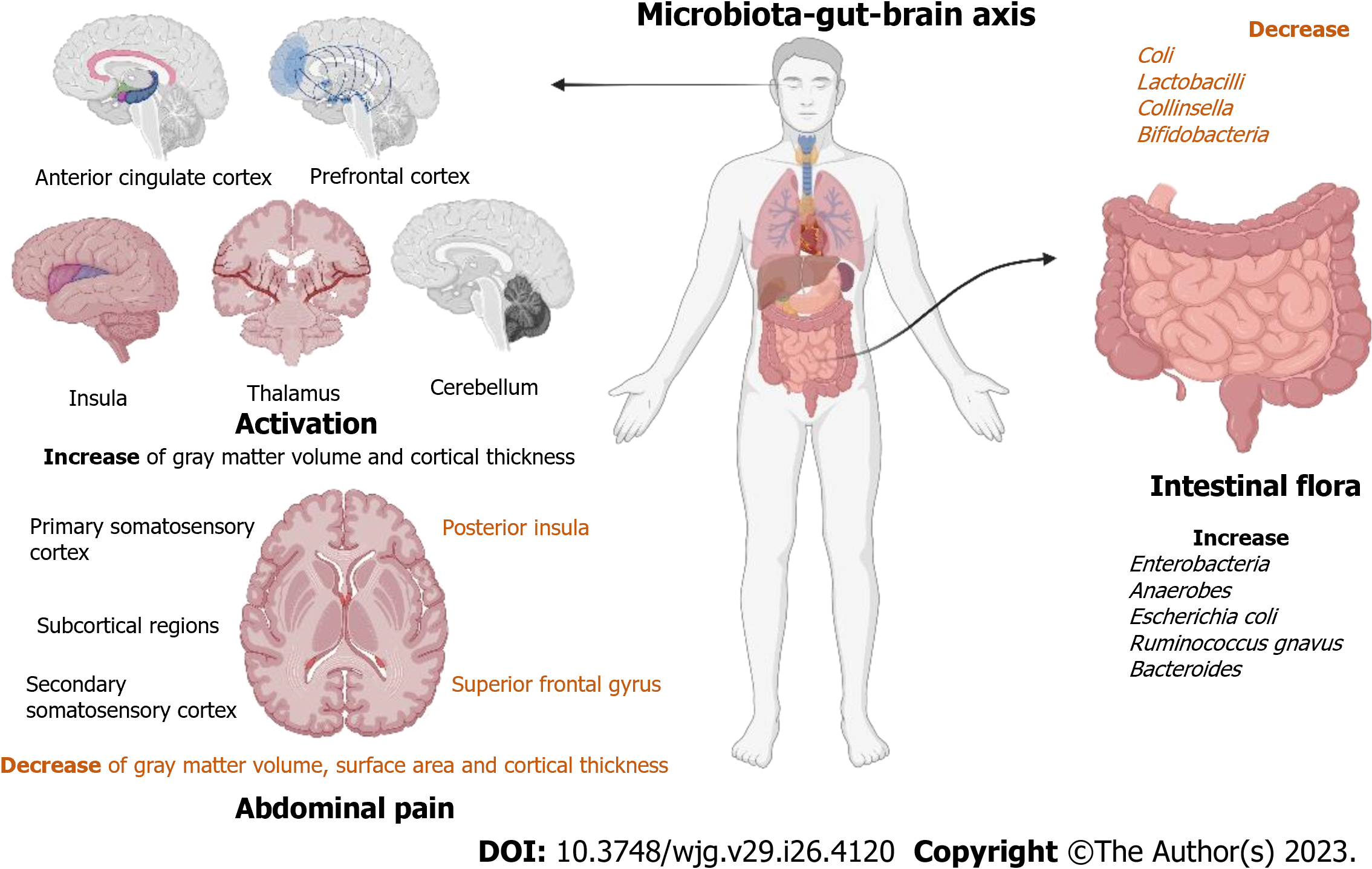Copyright
©The Author(s) 2023.
World J Gastroenterol. Jul 14, 2023; 29(26): 4120-4135
Published online Jul 14, 2023. doi: 10.3748/wjg.v29.i26.4120
Published online Jul 14, 2023. doi: 10.3748/wjg.v29.i26.4120
Figure 3 Research progresses on the mechanism of action of the microbiota-gut-brain axis.
Brain changes in patients with irritable bowel syndrome (IBS) are associated with abdominal pain. They have higher activation of the anterior cingulate cortex, prefrontal cortex, insula, thalamus, and cerebellum. They also mainly showed an increase of gray matter volume and cortical thickness in the primary somatosensory cortex, secondary somatic sensory cortex, and subcortical regions and a decrease of gray matter volume, surface area, and cortical thickness in the posterior insula and superior frontal gyrus. Specific changes in the intestinal flora of patients with IBS. The number of Coli, Lactobacilli, Collinsella, and Bifidobacteria in IBS patients decreased, while the number of Enterobacteria, Anaerobes, Escherichia coli, Ruminococcus gnavus, and Bacteroides increased.
- Citation: Huang KY, Wang FY, Lv M, Ma XX, Tang XD, Lv L. Irritable bowel syndrome: Epidemiology, overlap disorders, pathophysiology and treatment. World J Gastroenterol 2023; 29(26): 4120-4135
- URL: https://www.wjgnet.com/1007-9327/full/v29/i26/4120.htm
- DOI: https://dx.doi.org/10.3748/wjg.v29.i26.4120









